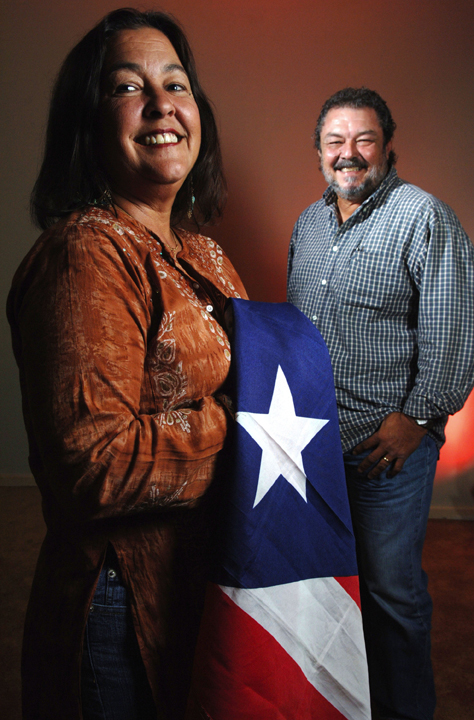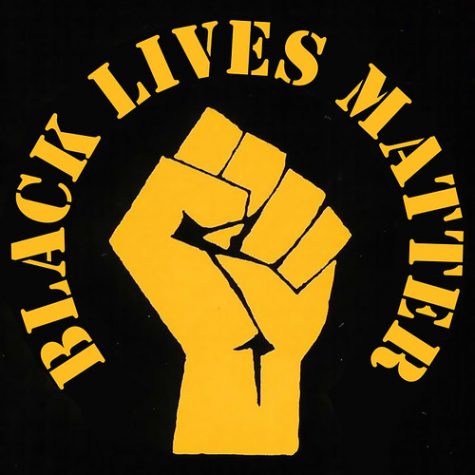Puerto Rico’s statehood would benefit the United States
Puerto Rican natives Sonia Vizcarrondo-Rizarry and her husband Rafi Escudero-Miranda of Wellington, Florida, are on different sides of the Puerto Rico statehood debate, July 3, 2007. Sonia prefers commonwealth and Rafi prefers statehood.
A number of notable changes occurred after the 2012 elections, with several states legalizing same-sex marriage and marijuana. However, another outcome could affect the number of states that make up the future United States of America.
For the first time, after a non-binding referendum, the majority of Puerto Ricans voted in favor of statehood.
However, analysts have discovered that the issue of Puerto Rico’s statehood is more complicated than this majority vote would indicate.
Puerto Rico is a commonwealth of the United States. According to the U.S. Supreme Court’s Insular Cases, a commonwealth is “a territory … belonging to the United States, but not a part of the United States.”
Puerto Rico voters were asked to vote on two issues. On the first issue, 54 percent of voters opposed the status of Puerto Rico as a United States Commonwealth. And on a second issue, 61 percent voted for statehood as the best alternative, 33 percent voted for a sovereign free association, and 6 percent voted for independence, according to CNN Politics.
Even if this referendum is an indication of what the majority of Puerto Ricans want, the island still will not be able to achieve statehood without Congress intervening.
According to Puerto Rico’s Secretary of State, Kenneth McClintock, the commonwealth’s economic, social and political turmoil greatly contributed to the recent majority vote for statehood.
Moreover, because of the increasing exodus, 58 percent of Puerto Rico residents live on the mainland of the United States, according to McClintock.
However, ballot complications might have made the vote inconclusive. Many voters did not believe the ballot was clearly defined.
Those who would have voted for the status quo, either disagreed with the ballot’s wording or failed to comprehend it. They ended up voting against their intended cause.
One-third of all votes cast on the question of an alternative status were left blank. If you consider these anti-statehood votes, the results in favor of Puerto Rico’s statehood would be less than 50 percent, according to Luis Agrait, a professor at the University of Puerto Rico.
The results of this referendum are inconclusive, but they expose Puerto Rico’s desire for change.
Puerto Rico’s status as an unincorporated territory seems unfair.
Puerto Rico exists under U.S. federal laws, but its residents do not have to pay some federal taxes. Also, Puerto Rico has a nonvoting representative in the U.S. Congress.
If Puerto Rico became a state, an extra $20 billion in federal funds could help the economy.
Also, Puerto Rico’s companies do not pay business taxes. These stipulations would disappear if Puerto Rico became a state.
Puerto Rico has been under United States control since 1898. In 1917, the island’s residents became American citizens, able to join the military, but not vote in presidential elections.
Extending the status of statehood would not only be fair decision, but also a profitable one for both Puerto Rico and the United States.
A number of notable changes occurred after the 2012 elections, with several states actually legalizing same-sex marriage and marijuana. However, another outcome could change the number of states that make up the United States of America in the future.
For the first time ever, after a non-binding referendum, the majority of Puerto Ricans voted in favor of statehood. However, analysts have discovered that the issue of Puerto Rico’s statehood is more complicated than this majority vote would have you believe.
Puerto Rico is a commonwealth, or an unincorporated territory, of the United States. According to the U.S. Supreme Court’s Insular Cases, an unincorporated territory is “a territory…belonging to the United States, but not a part of the United State.”
Puerto Rico voters were asked to vote on two issues. On the first issue, 54 percent of voters opposed the status of Puerto Rico as a United States commonwealth, as it currently is. On a second issue, 61 percent voted for statehood as the best alternative, 33 percent voted for a sovereign free association, and six percent voted for independence, according to CNN Politics.
Even if this non-binding referendum indicates what the majority of Puerto Ricans want, the island still will not be able to achieve statehood without Congress intervening in the process.
Puerto Rico’s desire for statehood is a long time coming. According to Puerto Rico’s Secretary of State, Kenneth McClintock, the commonwealth’s economic, social and political turmoil greatly contributed to the recent majority vote for statehood.
Moreover, because of an increasing exodus away from the island, 58 percent of Puerto Rico residents live on the mainland of the United States, according to McClintock. Such a daunting movement to the mainland exemplifies the results of Puerto Rico’s turmoil.
However, ballot complications might have made the majority vote inconclusive. Many voters did not believe the ballot clearly defined their options. Those who would have voted for the status quo, either did not agree with the ballot’s wording or failed to comprehend it. Ultimately, they ended up voting against their intended cause.
Also, one-third of all votes cast on the question of an alternative status were left blank, according to CNN. If you consider these anti-statehood votes, then the results in favor of Puerto Rico’s statehood would be less than 50 percent, according to Luis Agrait, a history professor at the University of Puerto Rico.
The results of this nonbinding referendum are not conclusive, but they do expose that Puerto Rico’s obvious desire for change, even if that change is not discernable.
When examining Puerto Rico’s status as a commonwealth, their status of as an unincorporated territory seems unfair in the year 2012.
The nearly four million residents in Puerto Rico could not vote in the U.S. Presidential election, a right that has been extended to the five million Puerto Ricans living on the U.S. mainland.
Moreover, because it is only a commonwealth, Puerto Rico exists under U.S. federal laws, but its residents do not have to pay some federal taxes. Also, Puerto Rico has a nonvoting representative in the United States Congress.
If Puerto Rico became a state, an extra $20 billion in federal funds could help the with the country’s 13 percent unemployment rate, according to The Washington Post. Also, the country’s residents do not have to pay federal taxes and companies do not have to pay business taxes. These two stipulations that would disappear if Puerto Rico became a state.
Puerto Rico has been under United States control since 1898. In 1917, the island’s residents became American citizens, capable of joining the military, but not vote in presidential elections.
Puerto Rico’s current status is simply a remnant of the colonial world, and in the post-colonial era, it seems that status should change. Extending the status of statehood to the commonwealth would not only be a fair decision, but also a profitable one for both Puerto Rico and the United States.








![According to a 1993 archive from Congressional Quarterly Almanac, “[Judge] Ginsburg was known as a restrained and fair-minded judge who did her homework and then some.” She was “considered moderate to conservative on criminal issues and business law,” relatively progressive “on issues such as free speech, religious freedom and separation of church and states,” and more liberal on “civil rights and access to the courts.”](https://www.hilltopviewsonline.com/wp-content/uploads/2020/10/VP-4RBG_CC-by-WFULawSchool-475x317.jpg)
